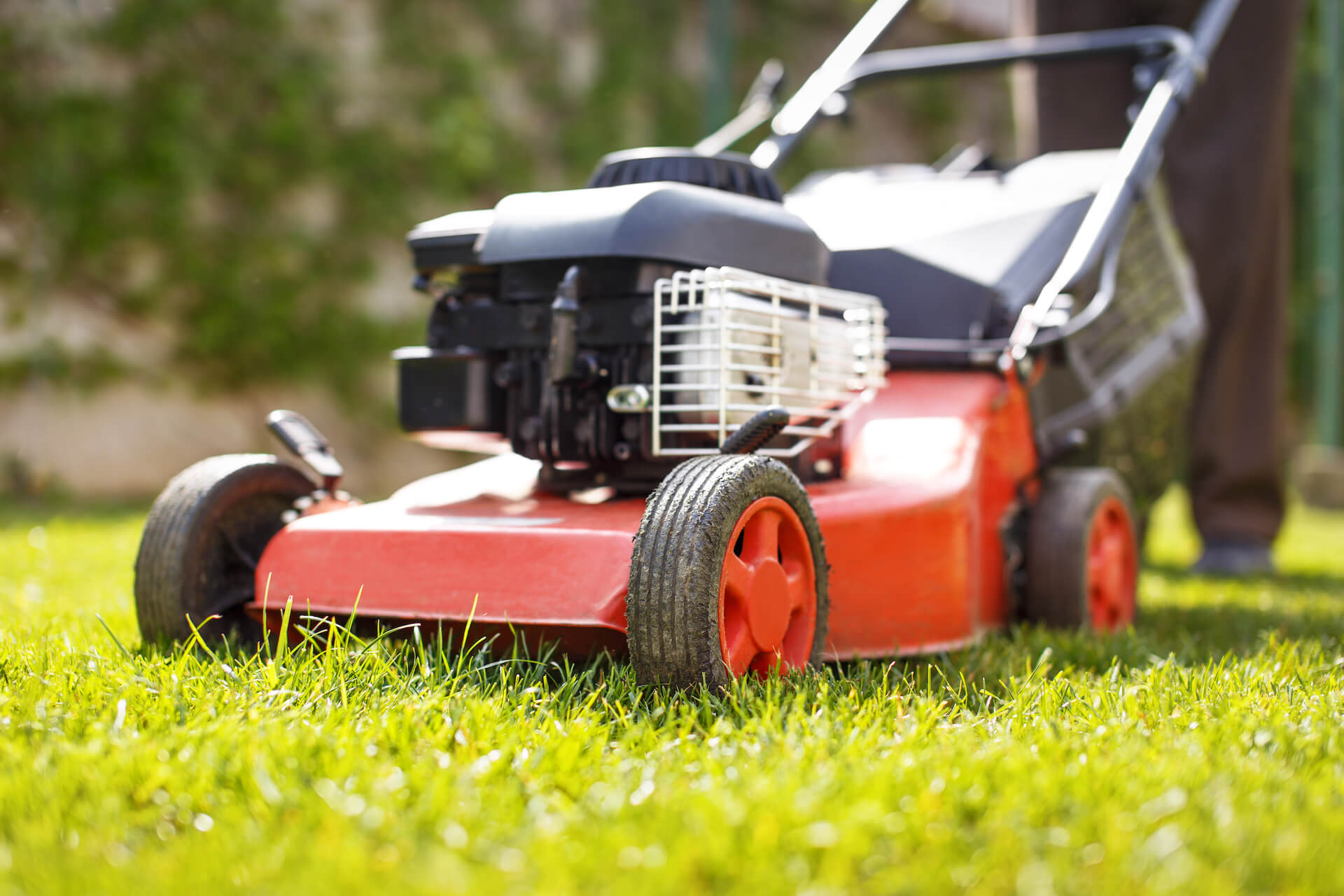Spring is in the air. Days are getting longer, the blossoms are blooming, and the temperatures are rising. While this means we can get ready to do all our favorite spring and summer activities, we also have to prepare for the spring-time yard work that’s coming our way. Lawn equipment can be expensive, so we must take the proper steps to take care of it before we get to work. Keep reading to learn the steps to prepare your lawnmower for spring.
Remove Your Spark Plug
Before you get to work on anything else, you’ll want to remove your spark plug for safety reasons. Odds are you’re probably going to have to replace it anyway, as spark plugs need maintenance or replacing every 25 hours of work. If you don’t replace it on time, it can negatively affect your engine’s start-up and overall performance.
Follow these steps to properly replace your spark plug and stay safe:
- Remove the spark plug boot.
- Use a socket wrench with a spark plug socket to remove the old plug.
- Take it to an auto parts store or an outdoor-gear dealer and get a new one.
- Don’t finish replacing the spark plug until all other maintenance is completed. This will ensure that your lawnmower doesn’t turn on while handling it.
Change Your Oil
After not using your lawnmower all winter, your oil may need to be refreshed or completely replaced. Look at your owner’s manual to check if it prescribes that you change or simply top off your oil. Manufacturers of most modern, walk-behind lawnmowers say that you can just top off your oil.
You mustn’t use your lawnmower before completing this step. If you don’t have sufficient oil in your lawnmower, its engine can overheat and fail prematurely.
For tractor-style lawnmowers, you only need to change your oil as specified by the owner’s manual. Most riding lawnmowers and tractors also have an oil filter that should be changed when you change your oil.
To change your oil, follow these steps:
- Remove the oil drain plug at the bottom of the engine and let the old oil drain into a designated container for dirty oil.
- Once it’s drained, put the plug back.
- Refill the crankcase with the type and quantity of oil your owner’s manual recommends.
It’s best to replace your oil before with an empty gas tank. This will lessen the chance of you spilling duel when you tip the lawnmower over to drain the oil.
Change Or Clean Air Filters
A clean air filter will help your gas-powered lawnmower run more efficiently. Lawnmower air filters are typically made from paper, which you can remove in seconds. If you know your lawnmower’s model, it’s easy to order a new air filter online.
For a tractor, you may have a paper or foam filter. You can replace the paper. You will have to clean the foam filter with soap and water. Then you’ll rinse it and squeeze it dry.
Some manuals also recommend you oil down the foam filter with engine oil. If you do this, squeeze the filter dry again before reinstalling it.
Tractors also have a fuel filter that you should replace. Check your owner’s manual for the maintenance schedule and process.
Sharpen The Blades
Unfortunately, a dull lawnmower blade will only shred the tips of your grass. This will cause your lawn to turn brown. Depending on the lawnmower and how often you use it, the blade should be sharpened one to three times a year.
You should always remove the blades before sharpening. Once you’ve removed the blades, you can take them to a hardware store or an outdoor equipment retailer. They can sharpen your blades for about $10.
To remove the blades, wear heavy gloves and use a short 2 X 4 to keep the blades from moving while you loosen the bolts.
If you own a battery lawnmower, remove the battery before removing the blades. Since you can’t remove the battery on battery-powered tractors, remove the key first.
Clean The Deck
Use a strong stream of water and a putty knife (if necessary) to remove grass caked on the underside of the lawnmower deck. Clean the top of the deck and crevices around the engine and wheels with a rag or brush to remove grass clippings, leaves, and any other debris that might be there. Once you’ve finished cleaning, you can opt to wax the deck to prevent debris from sticking to it.
Lubricate Moving Parts
Your lawnmower will be more efficient and last longer if you lubricate it regularly. Oil the wheel bearings and any other moving parts that look like they need it. It helps to follow the instructions in your owner’s manual. Once you’re done, wipe off any excess runs of oil.
Fuel Up
Always ensure you start up your lawnmower with fresh fuel. If you start up your lawnmower with fuel that you didn’t stabilize over the winter, it could create problems that require you to drain the lines.
If you have old gas that you didn’t stabilize in your fuel tank, use a turkey baster to remove it. Then fill your fuel tank with fresh fuel and a stabilizer.
Most lawnmowers take gasoline that is 87-octane. You don’t need premium gasoline to get the job done. If your tank is holding winterized fuel, assuming you have enough fuel in the tank, your lawnmower should start right up.
Make Refilling Your Lawnmower Easy
Are you looking for a convenient way to refill your equipment this spring? Shop EZ-POUR® today! We offer various spouts that you can easily attach to your old gas cans. Why not try our Replacement Fuel Spout & Vent Kit? This kit will give you everything you need to fill your lawnmower this spring. Are you not sure which parts you need for your gas can? Check out our application chart.

